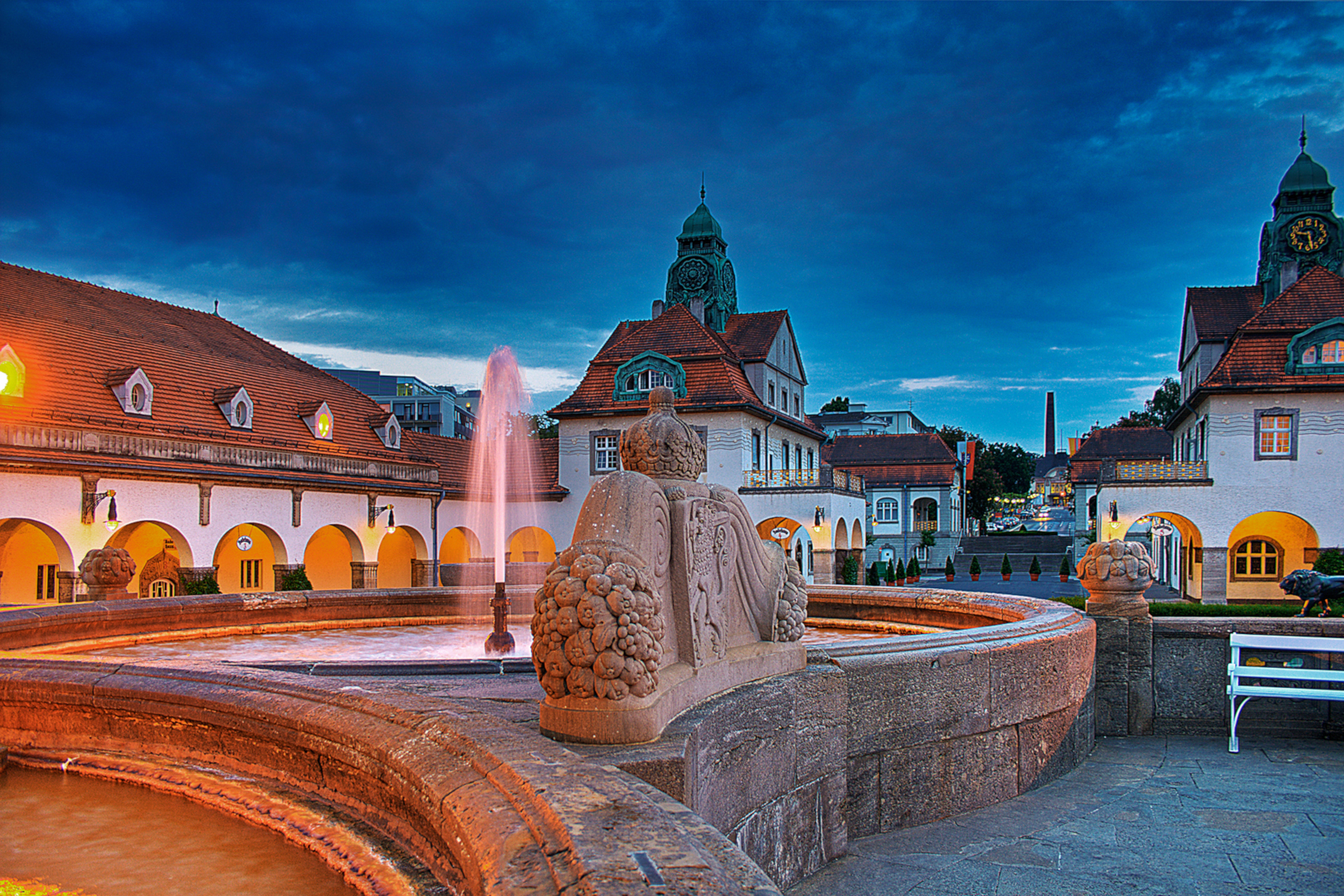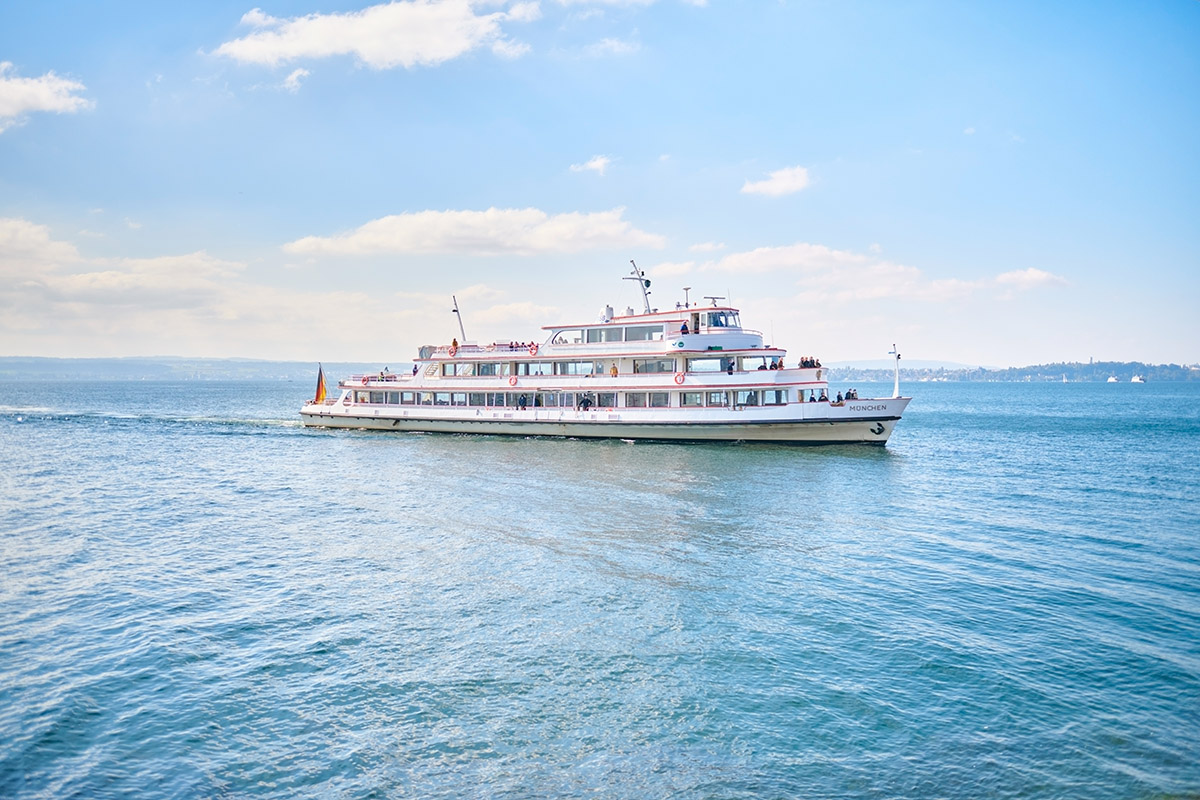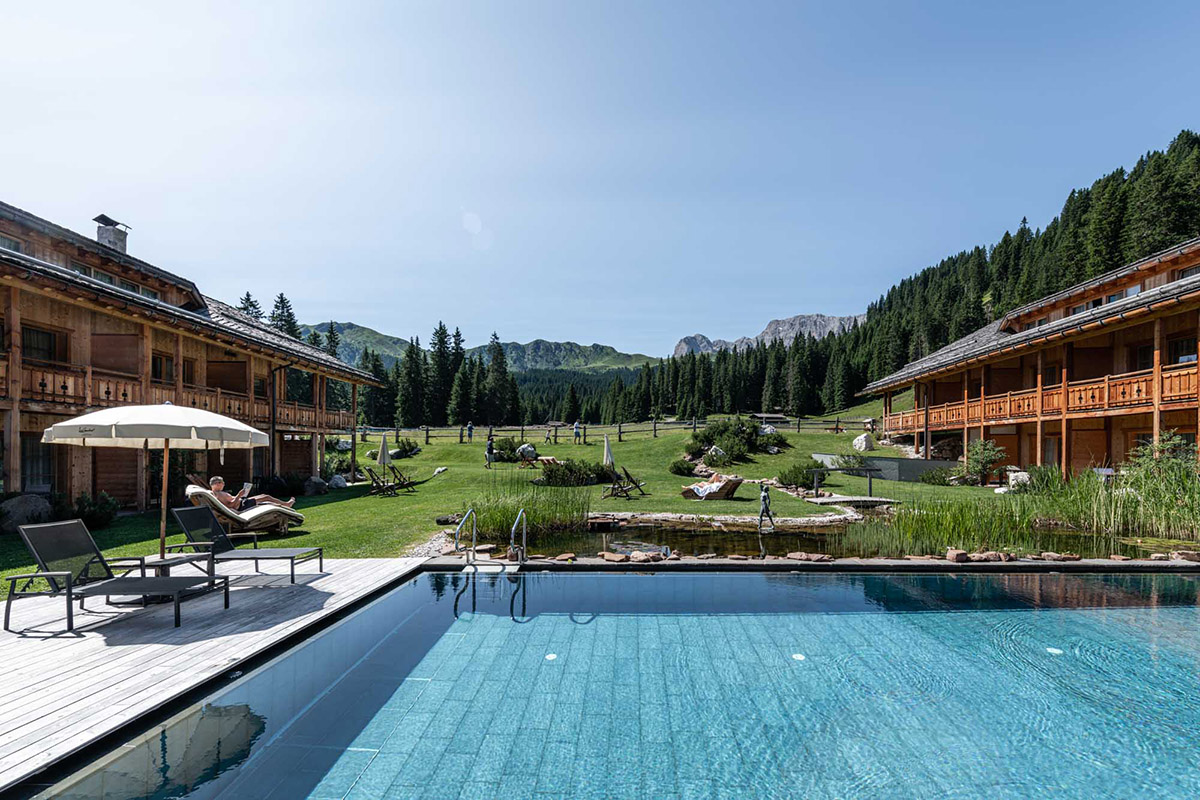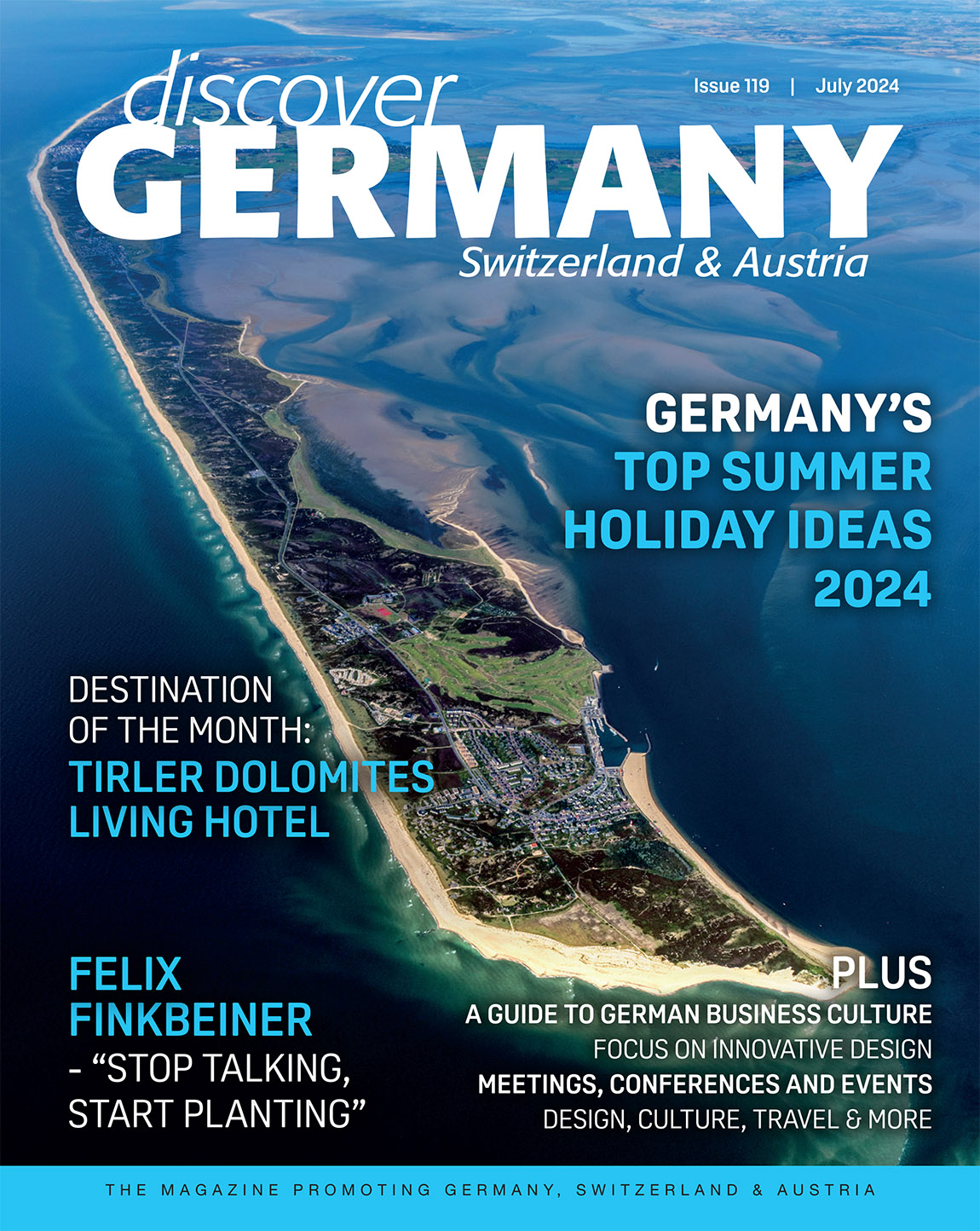Bad Nauheim

Bad Nauheim is a spa town rich in tradition
As a unique spa destination, the attractions of Bad Nauheim are manifold – and often tickle the visitor’s sense of exploration. The town’s grand flair is most perceptible around the famous historical spa quarter: An attractive boulevard and expansive parks invite for pleasant strolls while unique architectural monuments as well as theatres, galleries and a museum entice with cultural delights.
Situated at the heart of Germany, the highly accessible spa town is within easy reach from all directions. As of late, it has become a stage of the brand-new ‘Luther Trail’, an evangelical counterpart of the Jakobsweg.
Bad Nauheim has welcomed many famous visitors in its history: Sisi, Empress Elisabeth of Austria, for example, took a strengthening cure here in 1898. Most famously, Elvis Presley became a Bad Nauheim resident during the period of his military service at the US army base of Friedberg from 1958 to 1960. Together with his entourage, he resided both at the Villa Grunewald hotel and a private villa. At Villa Grunewald, the king of rock ‘n’ roll occupied an entire floor, which is again available to guests and fans after a recent reopening in 2017.
The spa town has also welcomed the Dalai Lama as well as King Ibn Saud I. But the healing powers of the mineral baths at Bad Nauheim are not reserved for royalty, or appointed royalty, only!

Original art nouveau interiors at bath house No.3.
Curative waters and art nouveau
Bad Nauheim’s landmark, the ‘Sprudelhof’ (fountain court) forms the largest art nouveau building ensemble of Europe. The combination of architecture, art and gardens impressively represents the art nouveau principle of creating a synthesis between fine and decorative arts. Spa guests enjoy the curative powers of the healing waters in original surroundings and interiors.
Formerly used for classic bathing cures, natural mineral saline today is mostly used for wellness-applications as a new expression of health awareness. The bathhouse No.3 at the Sprudelhof is a place where you can enjoy a bubbling warm bath ‘just like 100 years ago’ and enjoy the soothing effects of the mineral waters. Original furniture from the beginning of the 20th century surrounds the tubs made of African afzelia wood.
The art nouveau Trinkkuranlage (mineral water complex) bears witness to Bad Nauheim’s reputation as a world spa destination. The impressive architectural heritage honours the healing powers of the water through its splendid interior and loving attention to detail.
Crowned with a golden dome, the counter with waters from the Kur-, Karls- and Ludwig springs forms the centrepiece of the ensemble.

Fountain of Insight.
Rose village
There is a saying about tulips stemming from Amsterdam, and roses stemming from Bad Nauheim. The Steinfurth part of town houses the oldest rose village in Germany. Here, everything revolves around the history and cultivation of the ‘queen of flowers’. At the museum café, there is even a rose tart on offer!
A history of wealth and wellness
Without its ‘white gold’, Bad Nauheim would not have developed into the sought-after destination it is today. Over time, the hot mineral springs turned the town into a wealthy place of significance. While the salty springs were discovered and used by Celtic settlers already, Franconian colonisers re-established salt extraction from 700 onwards at a medieval settlement with 13 salt boiling units. The ’söder’ (salters) were already aware of the natural springs’ healing powers. Originally built to enhance salinity levels, five graduation buildings with a total stretch of 650 metres reach ten metres high. Water was absorbed from the brine trickling down from the large surface of blackthorn walls. The Nauheim graduation works count as the oldest of their kind in Germany.
Nauheim‘s change from a ’söder’ village to a spa town began during the first half of the 19th century. The first saline baths opened in 1835 and the village received the legal status of a town and health resort by 1854. In the following decades, Bad Nauheim grew into a renowned spa for cardiac and vascular diseases for prominent guests of the European nobility as well as the national and international bourgeoisie.
When the whole of Europe was seized by a reform movement at the dawn of the 20th century, the art nouveau – or ‘Jugendstil’ as it was called in Germany – broke with the traditions of European architecture and arts and crafts that had been rigid for decades. Health-conscious thinking became part of the life reform in society. Between 1905 and 1912, the architect Wilhelm Jost and members of the Darmstadt artists‘ colony shaped the new face of the town of Bad Nauheim, including the entire Sprudelhof ensemble. By merging nature and architecture, they created an urban masterpiece in the spirit of the modern age.

Art Nouveau Festival.
Colorful events draw colorful crowds
Due to both its early and recent history, Bad Nauheim draws a diverse crowd of spa guests, families, art nouveau enthusiasts and rockabilly fans, as well as rose lovers. This year, the Steinfurth rose village will host a special event titled ‘150 Jahre Rosen aus Steinfurth’ (9 and 10 June), honoring Heinrich Schultheis who brought the art of rose cultivation back home from a trip to England in 1868. A jubilee exhibition at the rose museum, running from 27 April to 30 November will accompany the event.
In July, the Rose Festival (13 to 16 July) will attract thousands of visitors again with a rose parade, rose exhibition, rose market and a fantastic firework display as its brilliant finale.
During the 17th European Elvis Festival (17 to 19 August), the spirit of the legendary ‘King’ will once more take over the whole town. Cover bands, cinema sessions and an Oldtimer Parade will turn Elvis Presley’s ‘European Home’ once more into a mecca for rockabillies.
Last but not least, the Art Nouveau Festival (7 to 10 September) will take visitors back to the grand old times: Transported to the turn of the 20th century, spa guests and art lovers alike can admire the wide repertoire of art nouveau craftsmanship at the artisan and restorers market, visit exhibits and lectures on the movement, or enjoy a ride in a hackney carriage amidst penny-farthing cyclists.
TEXT: CORNELIA BRELOWSKI | PHOTOS © BAD NAUHEIM STADTMARKETING UND TOURISMUS GMBH
Subscribe to Our Newsletter
Receive our monthly newsletter by email




